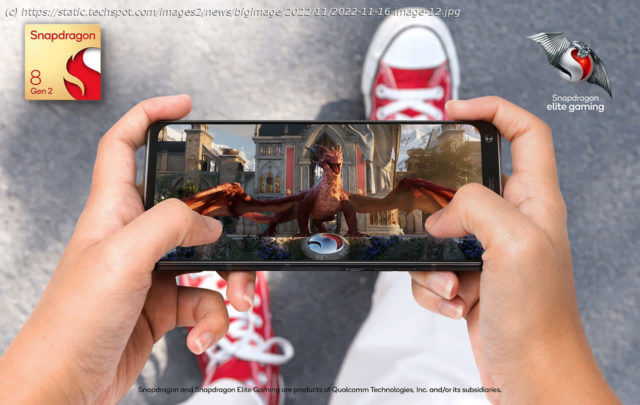The latest chip from Qualcomm offers several impressive advances in computing performance, image capture and processing, gaming (including hardware-based ray-tracing support), audio quality, connectivity, and more. Even.
Why it matters: Qualcomm’s annual Snapdragon Summit is typically a celebration of all things smartphone. After all, it’s the time and place where the company unveils its latest SoC design for the next generation of premium Android smartphones. True to form, the company did introduce Snapdragon 8 Gen 2, which is expected to be the engine powering upcoming premium phones from Samsung, Motorola, and many other vendors including Oppo, Vivo, and Xiaomi.
The latest chip from Qualcomm offers several impressive advances in computing performance, image capture and processing, gaming (including hardware-based ray-tracing support), audio quality, connectivity, and more. Even with this important bit of news, however, it was also clear from the general tone at this year’s event that Qualcomm is taking its strategy of developing one technology roadmap for multiple markets to new levels of maturity.
The company had announcements related to PCs, AR (augmented reality) and VR (virtual reality) headsets, AI software development tools, audio devices, connectivity components, and more.
From a pure tech news perspective, the company’s first ever AR headset-specific chipset, the Snapdragon AR2 Gen 1, was probably the most interesting and exciting announcement from the event. Qualcomm has been working for several years on chipsets intended for Mixed Reality (MR) and Virtual Reality (VR)—over 60 existing products already use them—but the power, performance, and size requirements for lightweight AR have been difficult to meet.
To overcome some of those challenges, Qualcomm has chosen an initially counter-intuitive yet ultimately clever approach to break up the main SoC into three different smaller components that can be spread out across a typical eyeglass design.
The main processing engine, built on a 4 nm process, is designed to fit on one eyeglass temple, the FastConnect 7800 WiFi 7 component on the other, and a smaller co-processor sits in between them above the nose bridge. In the process, they’ve reduced the size requirements for the PCB boards that hold the various components by 40% and reduced the amount of wiring necessary to connect them all together. Most importantly, the net result is a design that comes the closest to what I believe consumers would be willing to accept for this new type of form factor.
In addition to these physical changes, the company also managed to reduce the average power consumption of the entire system to below 1 Watt, which should lead to respectable battery life even with a small, lightweight battery.






